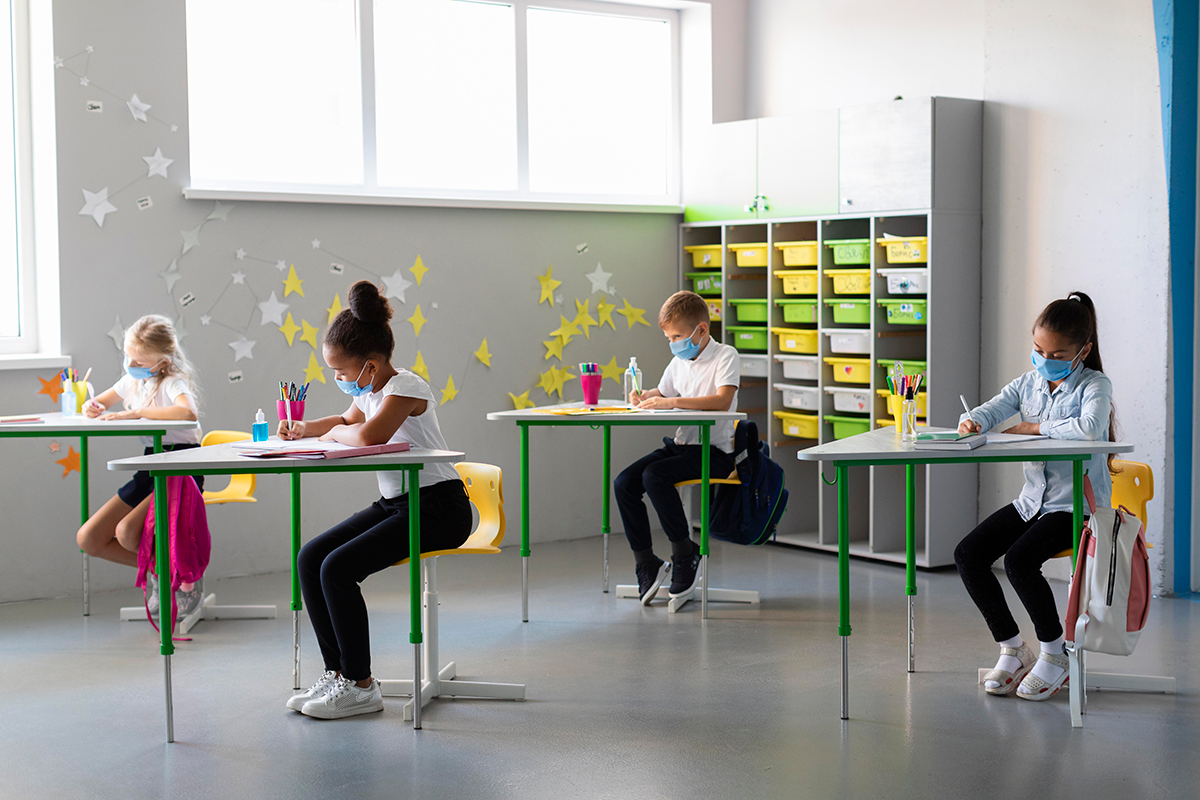As the world and its people inch towards the Post Covid era, there are umpteen coping strategies that rise to the fore.
Huddle together, Less is more, develop an attitude of thankfulness, be flexible in your thoughts, inculcate lateral thinking and so on.
Each strategy has its merit and rationale. So let’s raise a cheerful toast – to each their own.
When it comes to children and Reopening of Schools, there is immense focus on covering up for lost time.
Educators and Caregivers are busy formulating strategies for helping kids cope up with learning loss with a fair amount of focus on paying attention to curriculum completion, annual assessments and so on.
Being an educator, I completely understand the value of a structured learning approach and am a strong believer of the same. At the same time, Covid and the resultant Lockdown have considerably re-shaped the pattern of my neuron connections. My neuron synapses have been screaming out loud to me that the children have learnt a whole lot in this year, which can perhaps be put down as out of syllabus.
What children have been through in the past year, has no parallel in world history, in child pedagogy and behavioural science.
Their neurons never went into lockdown. Rather, they have been busy assimilating the present day scenario and trying to make sense of it.
No child had heard of social distancing before. In fact the warm Indian culture had only taught them that, the more the merrier. Teachers and parents had always stressed on ‘sharing is caring’ and holidays were always meant to be spent with extended families, friends and travel.
So how did their young minds make sense of a topsy turvy world in lockdown with no flights, cars or buses running?
Why did they need to be suddenly masked up all the time?
When did doctors start giving a virtual check up on screen and when did birthdays turn into virtual celebrations?
I am very sure that each young mind would have found a peculiar logic to these equally peculiar situations. Did anyone really listen to their logic, their young rationale?
Did anyone listen to their version of history in the year 2020?
That’s exactly my point. They have witnessed history being created during the pandemic year. Its time now to study that history lesson from their perspective.
So dear friends when the schools re open, let us not be in a hurry to pick up the text books and complete the syllabus. There’s a lot more that needs to be done, along with it.
Let us allow large chunks of time in just listening to our children.
- Listen to them
Listen to all the new rhymes, songs and stories they created in the year gone by. Make time to listen to their chatter about how they spent these months. Try to answer the million questions that will in all probability be raised to you. Listen to the stories of their families and friends and how they fared in the year gone by.
Make audio anecdotes and save it in your library. Year after year, children can listen and learn from it.
- Read to them
Read stories about pandemic heroes. Let the children listen to stories of hope, courage and valour. Let them see hope even in tragic stories of loss, relocation and illness due to the virus. Choose your stories well. Choose stories that are real yet not without hope. Feed the hope in them. Read stories that will help them make sense of the upside down world.
- Dance with them
Let the children express themselves freely. Have periods for performing arts liberally spread out through school the time table.
Some will perform, some will applaud. Yet all stand to gain
- Let them draw
Give them paper, colours and crayons to scribble, doodle, paint and draw, whatever they want to. Give them that window for expression. Yes, that’s right – help them express themselves using any medium. Some will speak, some will act, some will dance and some will draw.
- Integrate laughter in your classes.
Crack a lot of jokes. Release some feel good hormones. Begin the day with Laughter yoga. Dress up silly one day, just to tickle the stress out of the kids. Remember, it is extremely stressful even for kids to be without a routine. They may show outward calm but inwardly, every child craves for a routine.
- Make them your partners in establishing safety protocols in your schools & classrooms. Do not brush the safety concerns under the carpet. Let your children know that these concerns are for real. Let them know that there are some rules which are non-negotiable and safety is one of them. Let them know that safety is a joint responsibility and not the job of the teacher / parent alone. Put up posters in the class that talk about safety, have children do role plays talking about safety. Let them talk about the new vaccine and how it will impact their society and school.
- Have the courage of conviction to alter your curriculum planners. Make it inclusive of all that stands valid in the post pandemic world. Don’t worry too much about your students not matching up to your idea of where – they – should – be. Lets first get to know where – they – are at the moment. Savour that moment with them. Lets get comfortable with their persona at the moment. Once we know clearly where they are, the journey gets much easier.
- Do not be in a hurry to write Progress Report Cards. Let us re-look at our rubrics, what are we assessing them on? It is quite possible that they would have learnt more of science than maths in the year gone by. They may know more about vaccines, about migrant workers, about immunity, about physical fitness, about making videos at home, about Zoom calls etc. These may be out-of-syllabus, but they have been new learnings for them nonetheless. Accept this new learning curve.
Remember, that our attitude as educators will set the pace for learning in the post Lockdown era.
And what children learn at school, they are very likely to emulate at home.
Tons of happiness and sunshine to all those who work so dearly with children.
More power to you!
Warm Regards,
Manjit LeghaDirector, Academics & Trainings, Little Millennium


